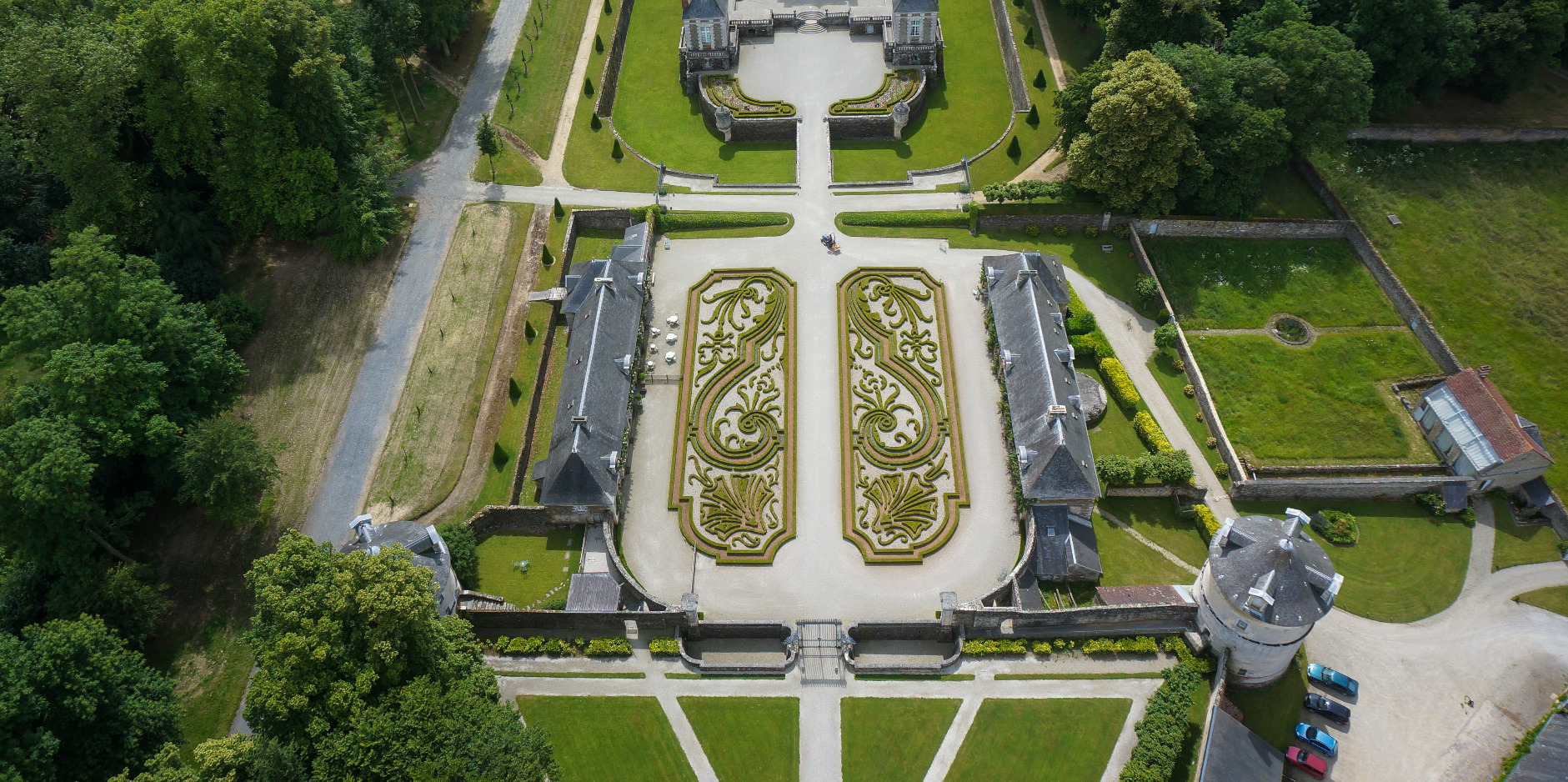The park and the gardens
The park
The Château of Balleroy is an architectural jewel whose setting is its 200-hectare park, ideal for strolling and relaxing with two marked paths, wide expanses of lawn, tables and benches. Rich in numerous tree species, this English-style park was laid out in the 19th century by landscape architects Bournot and Châtelain, in the Romantic style popular at the time. Its designers thus played with the relief to offer different perspectives on the château and enhance it even more, whatever the viewpoint.
The French gardens

Remarkable and elegant boxwood embroidery, the formal gardens visible today as soon as you arrive at the Château, date from the early 20th century. Inspired by Le Nôtre, they were designed at the owners' request by Henri Duchêne. The original formal gardens were on the other side of the Château. Abandoned during the French Revolution, they were replaced in the 1830s by the current English park.
Dovecote
In addition to its elegant, harmonious lines, the château's dovecote has the great interest of being in its original appearance, which is not so common. Indeed, most dovecotes were destroyed during the French Revolution at the end of the 18th century, as they were symbols of the Ancien Régime. Only aristocrats and religious orders were allowed to own them.
The one in Balleroy, one of the largest in Normandy, has preserved intact its 1,700 putlog holes, each housing two pigeons. A total of 3,400 pigeons gave birth to over 40,000 squabs a year, and consumed some 120 tonnes of wheat every year. In addition to their delicate flesh, the pigeons were bred for their droppings, the "colombine", which was a much sought-after fertilizer.
Inside the dovecote, you can still admire the vertical mast with an iron pivot at each end, which could easily turn on its axis and drive a ladder to reach the highest putlog holes.



